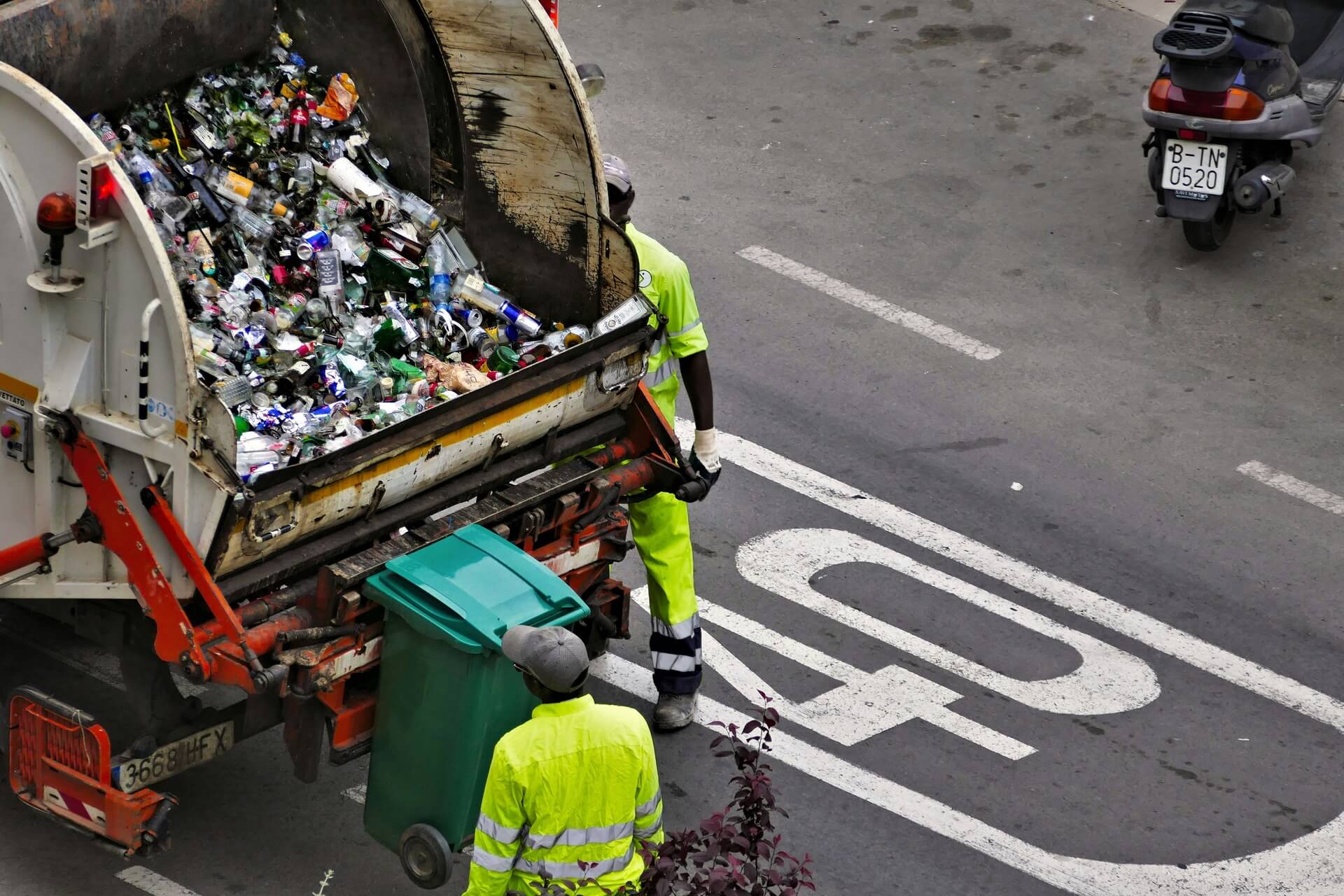
What is the UK’s Waste Hierarchy Pyramid?
We are reader-supported. When you buy through links on our site, we may earn affiliate commission.
Understanding waste management is essential for reducing environmental impact and promoting sustainability. The UK Waste Hierarchy Pyramid serves as a structured model that prioritizes waste management strategies according to environmental preference.
Explores the hierarchy’s structure, significance, and how individuals, businesses, and policymakers can apply its principles to minimize waste and maximize resource efficiency.
UK’s Waste Hierarchy Pyramid
The UK Waste Hierarchy Pyramid is a framework used in the UK and other countries to rank waste management options according to their environmental impact. By following this structured approach, waste generation can be minimized, resources can be conserved, and the environmental footprint of waste disposal can be reduced.
The hierarchy encourages sustainable practices by prioritizing waste prevention and reuse before considering recycling, recovery, and disposal.
The Five Tiers of the Waste Hierarchy Pyramid
Each level of the Waste Hierarchy Pyramid represents a different approach to managing waste, ranked from most to least environmentally friendly.
- Prevention
Prevention sits at the top of the hierarchy, focusing on reducing waste before it is even created. This includes designing products that require fewer raw materials, encouraging sustainable consumer habits, and avoiding unnecessary waste production. Key strategies include:
- Eco-design: Creating products that use fewer resources, are built for longevity, and are easy to repair or upgrade rather than replacing them entirely.
- Sustainable consumption: Choosing products with minimal packaging, purchasing bulk to reduce waste, and selecting items that can be reused or refilled instead of single-use alternatives.
- Efficient manufacturing: Implementing lean production techniques to reduce material waste, optimizing cutting patterns in textiles and construction, and using precision-based technologies to minimize excess material usage.
- Reuse and Preparation for Reuse
This tier emphasizes extending the life span of products and materials through repair, refurbishment, and repurposing. Reuse prevents items from becoming waste prematurely and reduces the need for new resource extraction. Here are some common reuse strategies:
- Repair workshops: Community-driven initiatives and repair cafés that teach individuals how to fix household appliances, electronics, and clothing instead of discarding them.
- Second-hand markets: Online and physical platforms, such as charity shops, peer-to-peer marketplaces, and swap events, that facilitate the exchange and resale of used goods.
- Corporate reuse programs: Businesses refurbishing office equipment, IT hardware, and furniture rather than disposing of outdated assets, reducing operational waste and costs.
- Donation networks: Organizations that collect and distribute unwanted but functional items, such as furniture, books, and clothes, to people in need instead of sending them to landfills.
- Recycling
Recycling transforms waste into new products, reducing the need for virgin resources and decreasing landfill contributions. Proper recycling practices are crucial in maintaining a circular economy. Recycling initiatives include:
- Curbside collection: Local government-run programs that collect separated paper, plastics, glass, and metals for efficient processing and reuse in manufacturing.
- Drop-off centers: Designated sites where individuals can deposit recyclable materials that are not typically included in curbside collections, such as batteries, electronic waste, and textiles.
- Industrial recycling: Large-scale operations that recover valuable materials from electronic waste, construction debris, and end-of-life vehicles, helping to conserve raw materials and reduce pollution.
- Composting organic waste: Turning food scraps and garden waste into nutrient-rich compost to enrich soil quality and support sustainable agriculture.
- Recovery
Recovery involves extracting value from waste that cannot be reused or recycled. This is primarily done through energy recovery methods, such as incineration with energy capture or anaerobic digestion of organic waste. Below are key recovery methods:
- Waste-to-energy plants: Facilities that convert non-recyclable waste into electricity and heat, reducing landfill dependency and generating usable power for local communities.
- Biogas production: The anaerobic digestion of organic waste, such as food scraps and agricultural residues, to produce methane gas for renewable energy generation.
- Material recovery: Extracting usable metals, plastics, and other resources from mixed waste streams before final disposal to enhance material efficiency and reduce overall waste volumes.
- Chemical recycling: Advanced recycling technologies that break down plastics into their original chemical components, allowing for high-quality material recovery that traditional mechanical recycling cannot achieve.
- Disposal
At the base of the hierarchy, disposal represents the least desirable waste management option. Landfilling and incineration without energy recovery contribute to environmental degradation and greenhouse gas emissions. Common disposal methods include:
- Landfills: Sites where waste is buried, often leading to soil and water contamination, methane emissions, and long-term environmental concerns.
- Open burning: The uncontrolled incineration of waste, which releases toxic pollutants into the atmosphere, contributing to air quality issues and climate change.
- Dumping in unauthorized areas: Illicit waste disposal in natural environments, such as forests, rivers, and oceans, causing severe ecological damage and endangering wildlife.
Legal Framework and Obligations
The Waste (England and Wales) Regulations 2011 mandate adherence to the Waste Hierarchy Pyramid, requiring businesses and local authorities to apply its principles in waste management practices.
Compliance ensures that environmentally friendly solutions are prioritized over less sustainable alternatives. The UK government and environmental agencies enforce these regulations, aiming to shift waste management strategies toward prevention, reuse, and recycling rather than disposal.
Implementing the Waste Hierarchy: Practical Steps
To align with the Waste Hierarchy Pyramid, individuals, businesses, and organizations can adopt several strategies:
- Conduct waste audits: Assess waste production levels to identify areas for reduction.
- Adopt sustainable procurement policies: Prioritize purchasing reusable, recyclable, and sustainably sourced materials.
- Establish reuse programs: Encourage donation and repair initiatives to extend product lifespans.
- Enhance recycling efforts: Provide clear recycling guidelines and facilities for proper waste sorting.
- Explore energy recovery options: Consider partnerships with facilities specializing in energy recovery from non-recyclable waste.
Challenges and Considerations
Despite the structured approach provided by the Waste Hierarchy Pyramid, several challenges remain:
- Behavioral change: Encouraging widespread adoption of sustainable waste management practices requires education and incentives.
- Infrastructure Limitations: Insufficient recycling and recovery facilities hinder effective waste management.
- Economic constraints: High costs associated with sustainable waste management practices can deter widespread implementation.
Recent Developments and Future Outlook
Recent reports indicate that the UK’s recycling rates have plateaued, with 44.1% of household waste recycled in 2022, down from 44.6% in 2021. Experts suggest that improved recycling infrastructure, better waste collection systems, and stricter enforcement of waste hierarchy regulations are needed to reverse this trend.
As sustainability goals evolve, innovations in waste prevention, circular economy models, and policy-driven incentives will be critical in improving waste management practices.
A Sustainable Approach to Waste Management
The Waste Hierarchy Pyramid is a guiding principle for sustainable waste management in the UK. Individuals, businesses, and policymakers can reduce environmental impact and contribute to a circular economy by prioritizing waste prevention, reuse, and recycling before resorting to recovery and disposal.
Continuous improvements in waste management infrastructure, policy enforcement, and public awareness are essential to achieving long-term sustainability goals. Aligning waste management strategies with the Waste Hierarchy Pyramid is necessary for a greener, more resource-efficient future.
Share on
Like what you read? Join other Environment.co readers!
Get the latest updates on our planet by subscribing to the Environment.co newsletter!
About the author

Jane Marsh
Starting from an early age, Jane Marsh loved all animals and became a budding environmentalist. Now, Jane works as the Editor-in-Chief of Environment.co where she covers topics related to climate policy, renewable energy, the food industry, and more.





